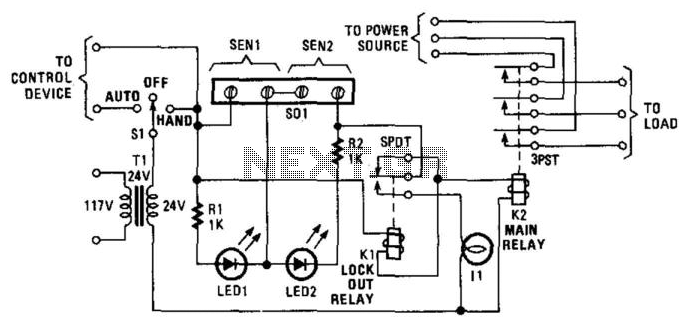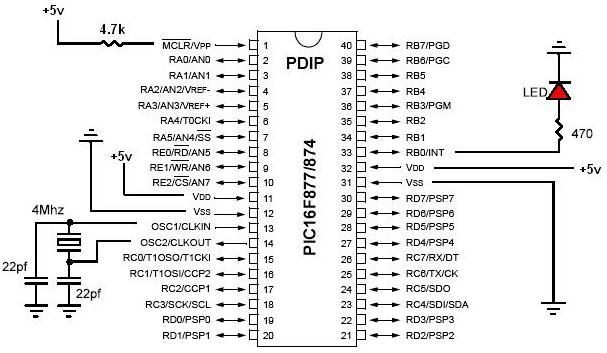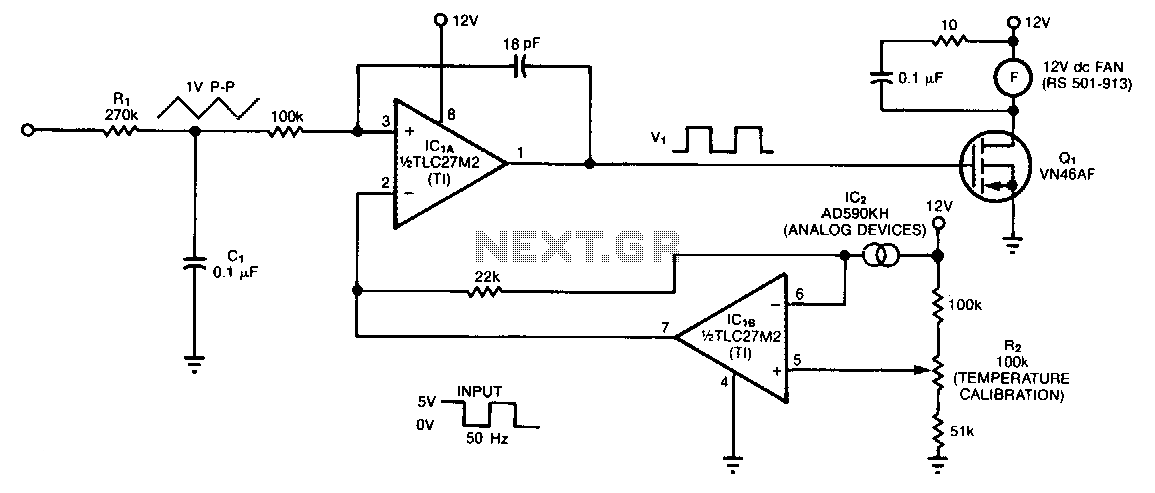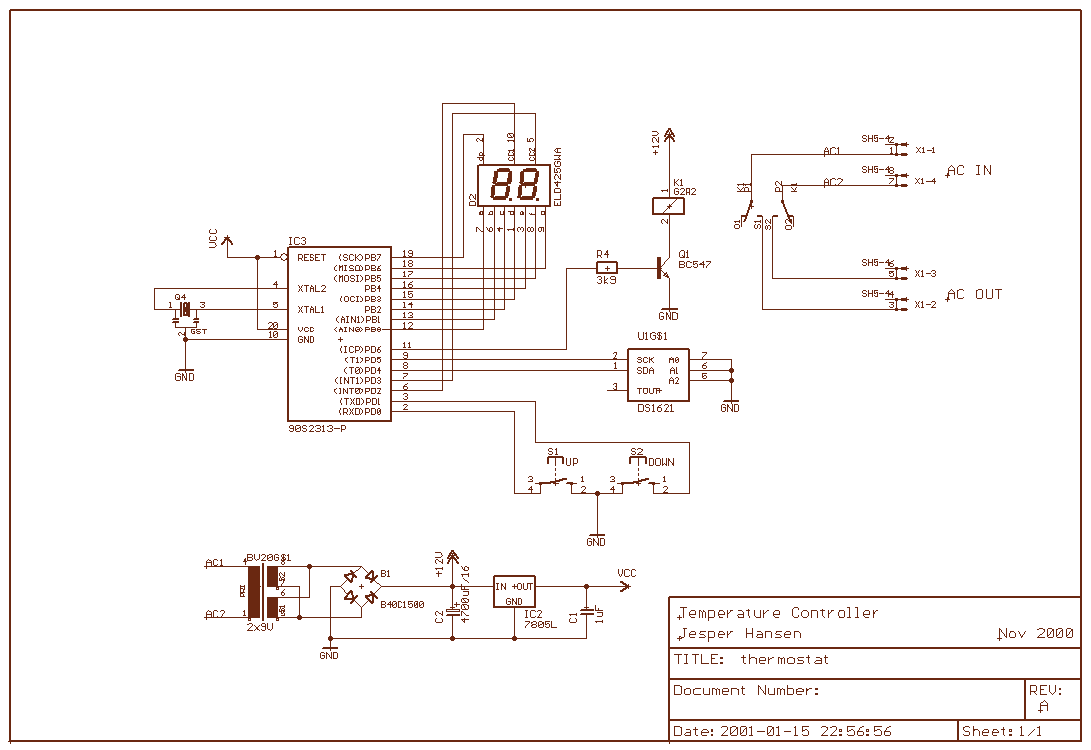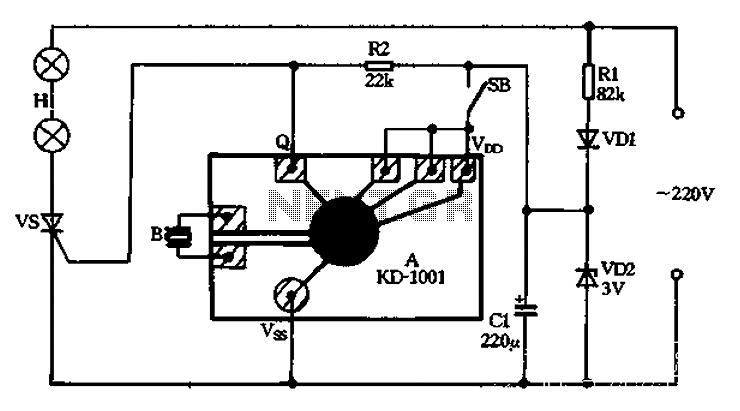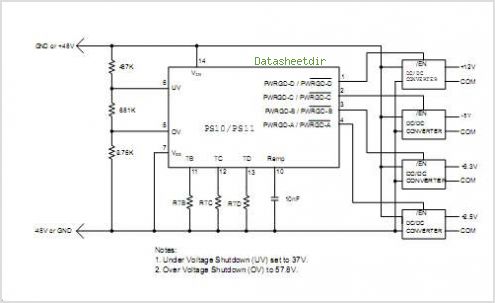
A linear dimming controller
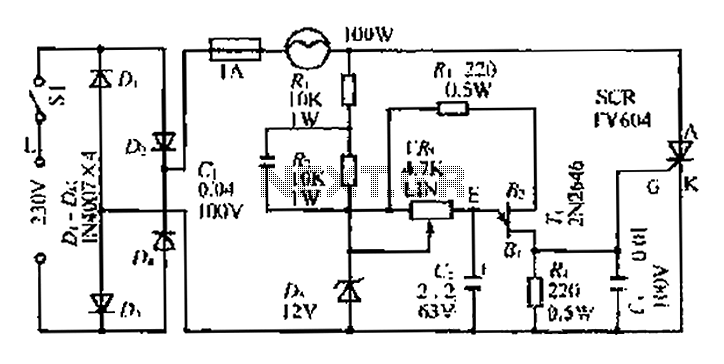
An AC voltage of 30V is rectified. The positive terminal is connected to a fuse and a 100W bulb, while the negative terminal is connected to a thyristor. A Zener diode provides a stable bias voltage. A variable resistor (VR) is used to adjust the brightness of the lamp, allowing it to operate between 15W and 60W.
The circuit begins with an AC power source rated at 30V, which is fed into a rectification stage. The rectifier converts the AC voltage into a pulsating DC voltage. The positive output of the rectifier is connected to a fuse, which serves as a protective device to prevent overcurrent conditions that could damage the circuit components. Following the fuse, a 100W incandescent bulb is connected, which acts as a load and visual indicator of the circuit's operation.
The negative terminal of the rectifier is linked to a thyristor, a semiconductor device that controls the flow of current. The thyristor is used to switch the load on and off, allowing for control over the brightness of the bulb. The operation of the thyristor is influenced by the gate signal, which can be manipulated through the adjustment of a variable resistor (VR).
To ensure stable operation, a Zener diode is integrated into the circuit to provide a fixed bias voltage. This component helps to maintain consistent performance despite variations in input voltage or load conditions. The variable resistor allows for fine-tuning of the circuit, enabling the brightness of the bulb to be varied between approximately 15W and 60W. The adjustment of the VR changes the conduction angle of the thyristor, effectively modulating the power delivered to the load and, consequently, the brightness of the lamp.
This configuration not only provides a means of controlling the brightness of the lamp but also demonstrates fundamental principles of power electronics, including rectification, load control, and voltage regulation. The design is suitable for applications requiring adjustable lighting or other forms of load management.AC 30V through I). - After the dish rectified by its positive terminal connected to the fuse IA IOOW bulb, the negative terminal is directly connected to the thyristor connecte d overcast proud. DC voltage by IOOW bulb fork by horse, Makati to J2V Zener B. L radiation plate to provide a stable bias. Liao Xu rotation VRi, T-emitting rice Xu also like to increase the voltage. A wind so felt furrow end j Bu liters.., R Zhu silicon conduction angle increases, increasing the brightness of the lamp f drawer, figure VR value can IOOW lamp brightness in the range of about 15 to 60W under tJ One uniform change
The circuit begins with an AC power source rated at 30V, which is fed into a rectification stage. The rectifier converts the AC voltage into a pulsating DC voltage. The positive output of the rectifier is connected to a fuse, which serves as a protective device to prevent overcurrent conditions that could damage the circuit components. Following the fuse, a 100W incandescent bulb is connected, which acts as a load and visual indicator of the circuit's operation.
The negative terminal of the rectifier is linked to a thyristor, a semiconductor device that controls the flow of current. The thyristor is used to switch the load on and off, allowing for control over the brightness of the bulb. The operation of the thyristor is influenced by the gate signal, which can be manipulated through the adjustment of a variable resistor (VR).
To ensure stable operation, a Zener diode is integrated into the circuit to provide a fixed bias voltage. This component helps to maintain consistent performance despite variations in input voltage or load conditions. The variable resistor allows for fine-tuning of the circuit, enabling the brightness of the bulb to be varied between approximately 15W and 60W. The adjustment of the VR changes the conduction angle of the thyristor, effectively modulating the power delivered to the load and, consequently, the brightness of the lamp.
This configuration not only provides a means of controlling the brightness of the lamp but also demonstrates fundamental principles of power electronics, including rectification, load control, and voltage regulation. The design is suitable for applications requiring adjustable lighting or other forms of load management.AC 30V through I). - After the dish rectified by its positive terminal connected to the fuse IA IOOW bulb, the negative terminal is directly connected to the thyristor connecte d overcast proud. DC voltage by IOOW bulb fork by horse, Makati to J2V Zener B. L radiation plate to provide a stable bias. Liao Xu rotation VRi, T-emitting rice Xu also like to increase the voltage. A wind so felt furrow end j Bu liters.., R Zhu silicon conduction angle increases, increasing the brightness of the lamp f drawer, figure VR value can IOOW lamp brightness in the range of about 15 to 60W under tJ One uniform change
Warning: include(partials/cookie-banner.php): Failed to open stream: Permission denied in /var/www/html/nextgr/view-circuit.php on line 713
Warning: include(): Failed opening 'partials/cookie-banner.php' for inclusion (include_path='.:/usr/share/php') in /var/www/html/nextgr/view-circuit.php on line 713
